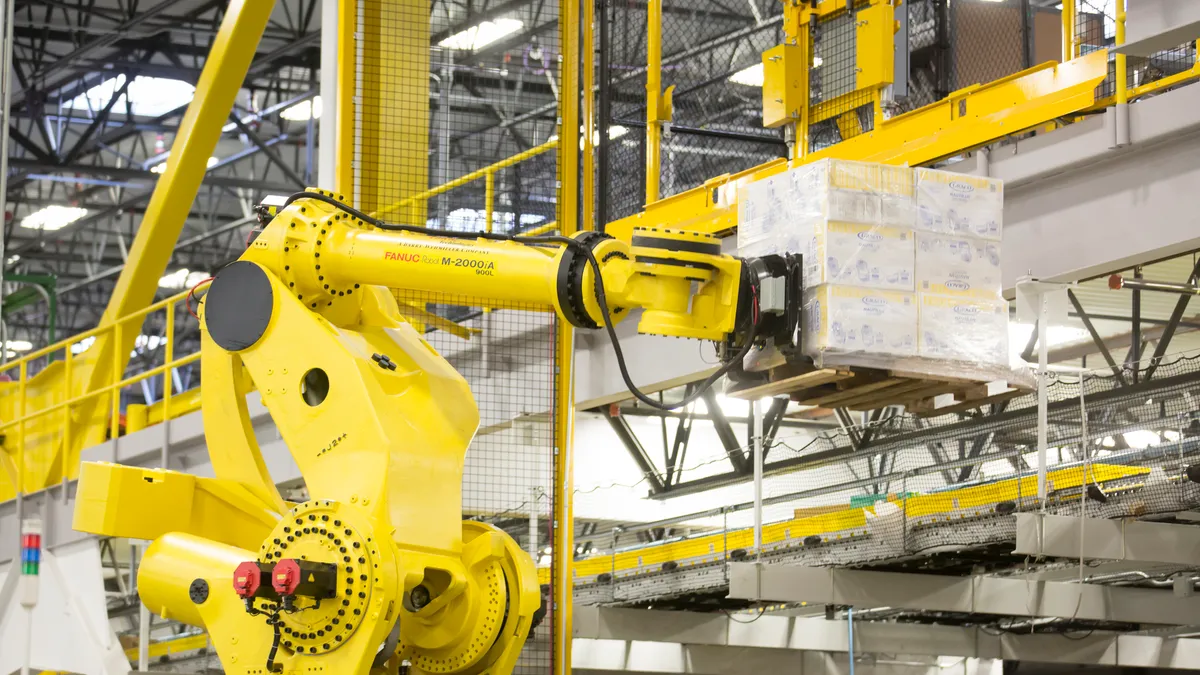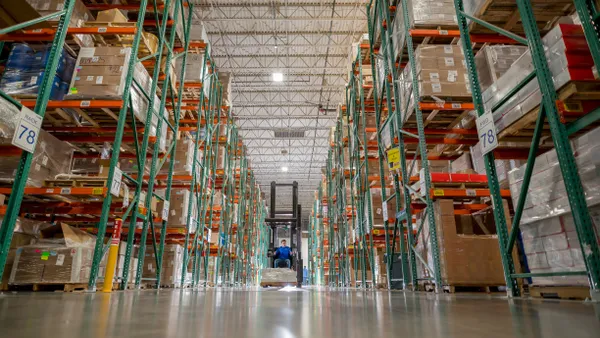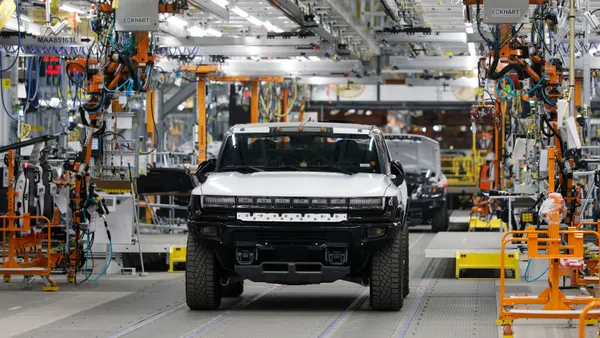Dive Brief:
- Orders of industrial robots in North America surged 20% YoY in the first quarter to reach 9,098 units, according to the Association for Advancing Automation, known as A3. Orders did fall nearly 9% from the fourth quarter of 2020.
- Automotive OEMs and component suppliers remained the largest buyers of industrial robots at 2,147 and 2,448 unit orders, respectively. But the metals and life sciences/pharmaceutical/biomedical industries saw the most YoY growth, up nearly 86% and almost 72%, respectively, though they remained relatively small market segments.
- Advancements in automation technology, along with labor shortages in manufacturing and robotics, are among the factors driving expanded use of robots, Jeff Burnstein, president of A3, said in a statement.
Robot orders tick up during pandemic
Dive Insight:
Manufacturers, logistics companies and other industries have been looking to automation for years as a way to increase productivity, but the pandemic increased interest for robotics and process automation technologies.
Last summer, a survey by Honeywell of employees at companies that directly manage warehouses, distribution centers or fulfillment centers found that 51% of them are more willing to invest in automation as a result of the pandemic.
McKinsey found companies were even more willing to step up adoption as a result of the pandemic, with two-thirds of respondents telling the consulting firm that they were increasing spending on automation or aritificial intelligence either "somewhat or significantly."
"Many companies deployed automation and AI in warehouses, grocery stores, call centers, and manufacturing plants to reduce workplace density and cope with surges in demand," McKinsey wrote in a "Future of Work" report this year.
Automotive still leads in automation investment
XPO Logistics said it has seen an increased demand for automation to help handle swelling e-commerce volume.
The pandemic has also forced greater adoption within the life sciences. One example was Eli Lilly creating a system to automate the process for COVID-19 testing.
Many companies have recently spoken about difficulties as it relates to hiring, a trend that could also encourage greater automation adoption, as Burnstein mentioned.
These investments can be seen in the growth of industries outside of automotive in A3's figures, Burnstein said in an email.
"The real trend that we observe is that the non-automotive sector as a whole is now nearly as large as the automotive sector, which in the early days of robotics accounted for over 70% of robot sales," he said. Growth "in life sciences ... could be related to efforts to develop the vaccines, and in metals it could be that small and medium sized companies who hadn't purchased robots before did so in order to remain competitive."
This story was first published in our weekly newsletter, Supply Chain Dive: Operations. Sign up here.













